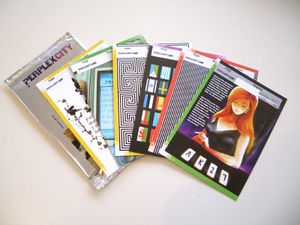Firebox Card: Number 123: Difference between revisions
From Perplex City Wiki
Jump to navigationJump to search
No edit summary |
TheBozzball (talk | contribs) (Alternate (maybe simpler) explanation.) |
||
| Line 20: | Line 20: | ||
The answer is A and 7. [[image:green_123.jpg|thumb|Pack of Cards]] | The answer is A and 7. [[image:green_123.jpg|thumb|Pack of Cards]] | ||
Some people guess the answer is A and 2. The logical statement of the problem can be phrased "an A on one side implies there will be a 2 on the other." People who get the answer wrong also presume the converse is true, that "a 2 on one side implies there will be an A on the other." This is not the case; therefore the 2 does not need to be checked. | Some people guess the answer is A and 2. The logical statement of the problem can be phrased "an A on one side implies there will be a 2 on the other." People who get the answer wrong also presume the converse is true, that "a 2 on one side implies there will be an A on the other." This is not the case; therefore the 2 does not need to be checked. Another way to see this is that the statement can be phrased "no card has an A on one side and a 7 on the other side". | ||
Latest revision as of 15:57, 4 December 2005
Illogical
From the firebox advert. The card on the top of the advert contains the following text:
Between all the distractions and parties at university, I did manage to fit in a few experimental psychology lectures. One of the most interesting things I learned was how at heart, people aren't as logical as they think. Try this problem: Each of these cards has a letter (A or K) on one side and a number (2 or 7) on the reverse. If I told you there was a rule stating that a card with A on one side will have a 2 on the reverse, which two cards would you turn over to find out if the rule was true?
The cards displayed on the card are
A K 2 7
The answer is A and 7.
Some people guess the answer is A and 2. The logical statement of the problem can be phrased "an A on one side implies there will be a 2 on the other." People who get the answer wrong also presume the converse is true, that "a 2 on one side implies there will be an A on the other." This is not the case; therefore the 2 does not need to be checked. Another way to see this is that the statement can be phrased "no card has an A on one side and a 7 on the other side".
